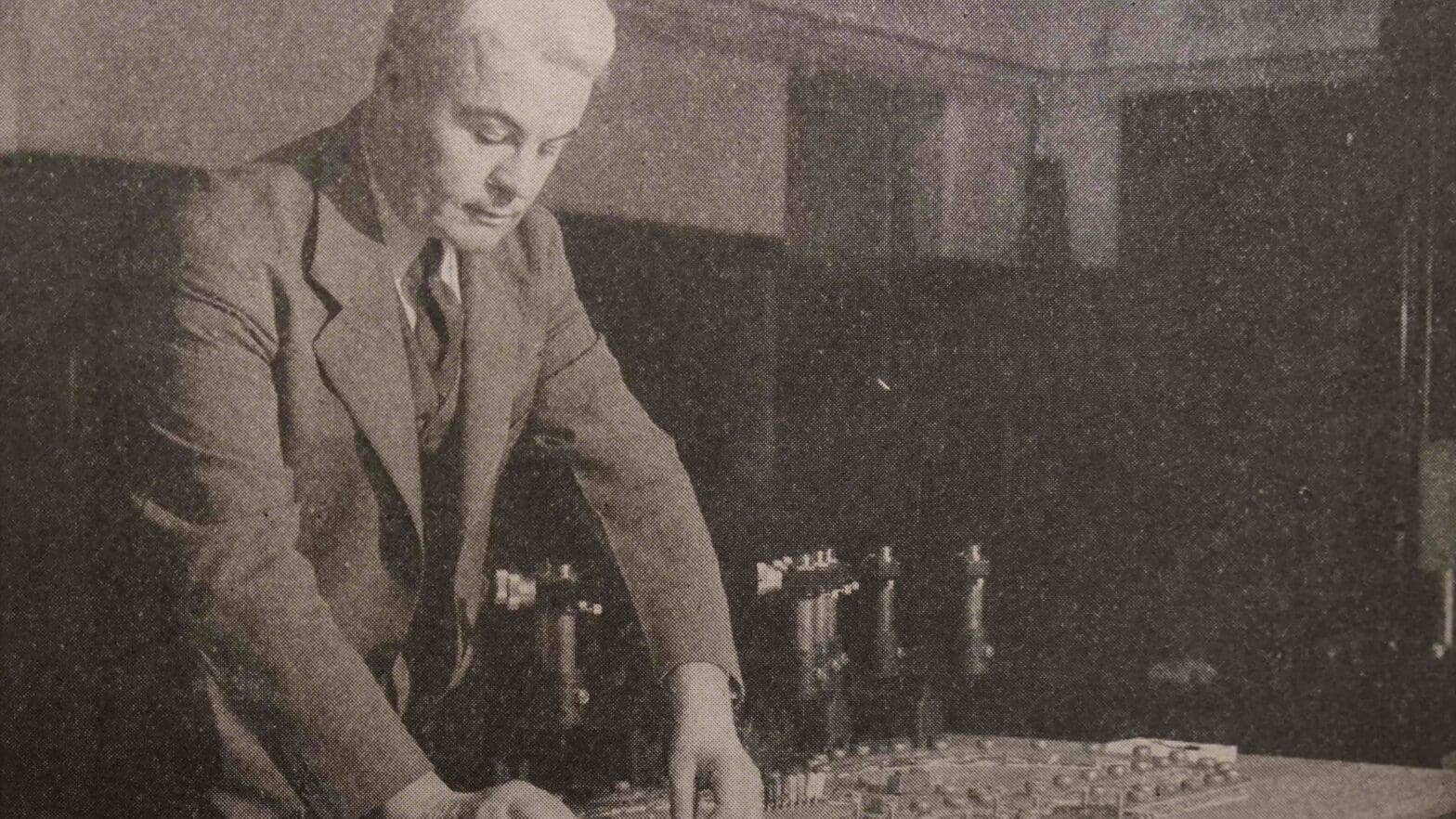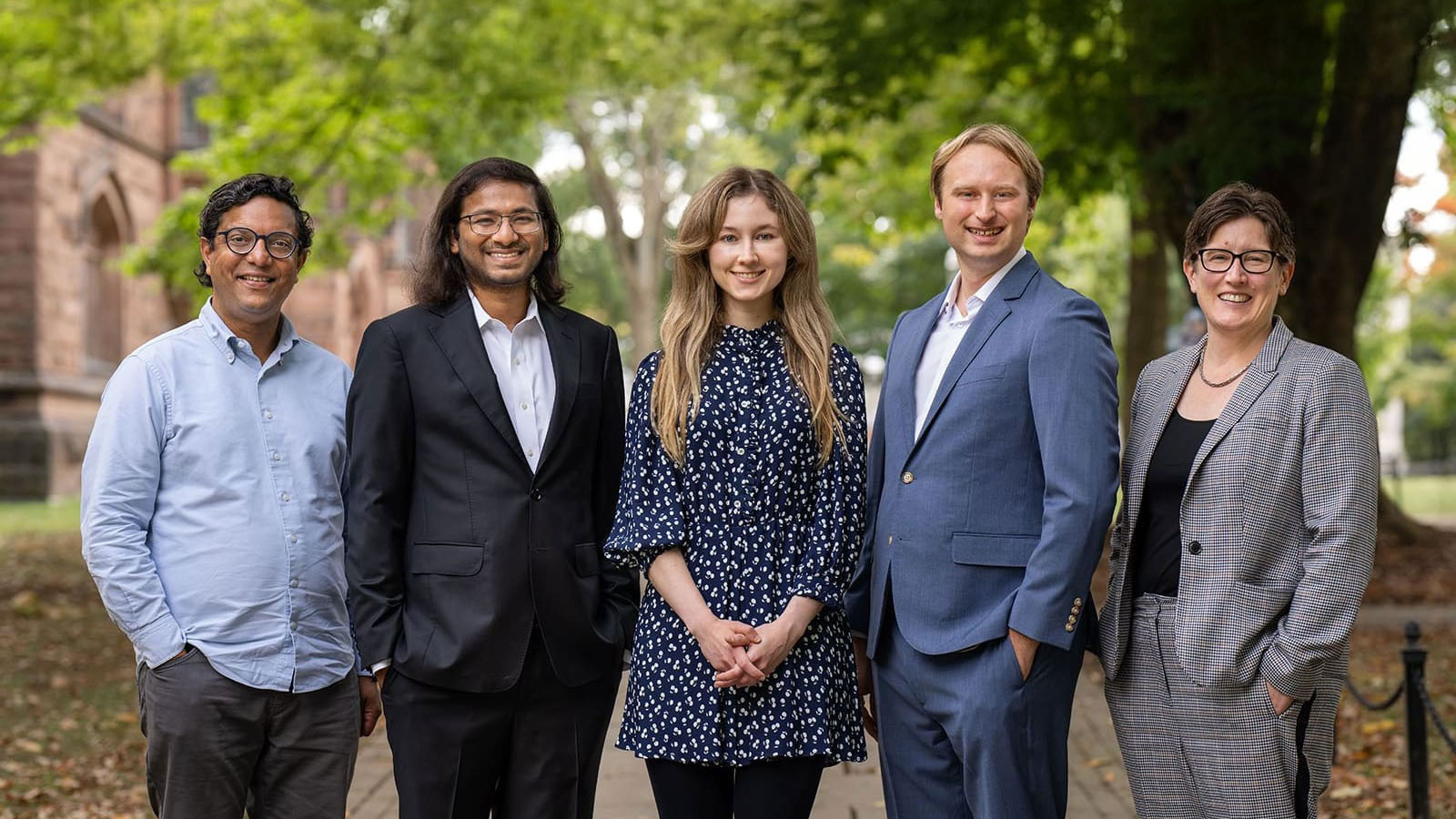
Part Two: The Early Years: They Said It
By
on
This is from the series E100: Princeton Engineering’s 100th anniversary
In Part Two of #100Years100Facts, we hear the (written) voices of some of our founders, and learned what values served as the foundation for the Princeton School of Engineering.
Follow the latest stories on our Instagram account.
“Engineering training is not vocational training in which doing is made subservient to thinking. It is true that engineering demands accomplishments and it is these accomplishments which make most of us pause in wonderment when we stand before them or have them serve our comfort in transportation, communications, manufacturer, power supply, or the home; but do any of us stop to think that these finished products were once imaginative structures in the mind of the engineer?
Before the work was done there was the vision, the image of the completed whole. The imagination of the engineer is equal to that of the novelist, the artist, the poet or the preacher where thought comes in the planning of work, and in many respects the work of all these creators is the same in the development of the complete whole.
There is one great difference, however, between the imagination of the engineer and that of the others. While the work of the novelist, artist, poet or preacher must appeal to the mind and the artistic taste, the realization of the engineer’s dream must not only appeal in the same way but it must satisfy the laws of nature regarding strength and proper action, and most cases must yield a monetary value.”
– Arthur M. Greene, founding dean of the School of Engineering, Feb. 25, 1925.
A professor of mechanical engineering, he was recruited from Rensselaer Polytechnic Institute, and served as dean from 1921 to 1940. This is fact #2 of 100 to celebrate Princeton Engineering’s 100th anniversary! (Source: Princeton Alumni Weekly)
“Princeton is advantageously located for engineering. It is in the heart of a metropolitan district and almost a suburb of the greatest engineering center of the world … The desire on the part of the Alumni to have a strong engineering department which will be worthy of Princeton, and as far as it goes, second to none, is practically unanimous. The hearty goodwill of the Faculty is equally evident.”
– Frank Henry Constant, the second chairman of the Princeton civil engineering program, in a 1914 essay published in Princeton Alumni Weekly.
This is the fourth of 100 facts to celebrate Princeton Engineering’s 100th anniversary! (Photo from “A History of the Engineering School of Princeton University 1875-1955” by Kenneth H. Condit.)
“An engineer may be considered as an applier of science for the benefit of mankind. That function implies an equal understanding of science on the one hand, and of human needs and trends on the other.”
– The Princeton Engineering Association, an alumni group that had pushed for the establishment for a freestanding engineering school at Princeton, in a state-of-the-school essay published in Princeton Alumni Weekly on May 5, 1933.
The four signatories included Kenneth Condit, a 1913 alumnus (pictured), who went on to serve as dean of the school during World War II. This is the sixth of 100 facts to celebrate Princeton Engineering’s 100th anniversary! (Image courtesy Princeton Alumni Weekly)
“The function of the four-year undergraduate course should be to train the student in what is known as the ‘engineering approach’ by concentration on the fundamental sciences with just sufficient attention to the application of these sciences so that he understands how to use the fundamentals he has acquired.
Further, that the undergraduate course should include those cultural courses needed to give the embryo engineer a broad picture of economic and social problems and of the elements of the arts, to the end that he may have the vision to rise above the purely technical phases of his profession and become a useful citizen, and a leader if he has the natural aptitude.”
– Princeton Engineering Association, an alumni group, in a report to University administration recommending a “fundamentals”-based approach to undergraduate education that lives on at Princeton Engineering and is now augmented with increasing focus on innovation and entrepreneurship as vehicles for students to generate benefits for humanity.
It was signed by five members of the association, including Alfred Rheinstein, Class of 1911. Rheinstein, who went on to develop low-cost housing in the New York City area, is remembered with an annual award to an engineering professor for distinguished research and teaching. This is the eighth of 100 facts to celebrate Princeton Engineering’s 100th anniversary!
“Even though we are trying to create opportunities for greater concentrations and depth of study in important areas of engineering science in senior year, we are not working toward greater specialization. We are trying to generalize! All the time, we are trying to loosen the departmental walls, and combine as much overlapping material as we can into more common courses.”
– Joseph C. Elgin, 1949.
Five years later, this chemical engineer and associate dean became the third dean of Princeton Engineering, serving from 1954 to 1971. Dean Elgin is best remembered for his work to place the emphasis of engineering education on general scientific knowledge, instead of approaching it as technical training. He recognized the young engineering school’s place on a predominantly liberal arts campus. Elgin also nurtured the school’s first graduate programs.
Today, Princeton Engineering is known for exceptionally low barriers to interdisciplinary research and teaching. Students routinely combine engineering studies with entrepreneurship, the arts, public policy and other interests. And it is common for faculty lab groups to include graduate students and postdocs from multiple departments, including from math, physics, chemistry and biology, bringing diverse perspectives to shared questions. This is the tenth of 100 facts to celebrate Princeton Engineering’s 100th anniversary! (Photo from K. Condit’s “A History of the Engineering School of Princeton University 1875-1955; quote from Feb. 18, 1949 edition of Princeton Alumni Weekly.)
“The University was founded in a world that was shortly to be transformed by the inventions of the early power engineers. By 1846, at the centenary of the institution, the industrial revolution was well underway and a period of unparalleled extension of industry was about to begin.
Now, at the threshold of the third century, in an era symbolized by the fission of the atom, promise is given that science and engineering, with ever increasing momentum, will be an overwhelming determinant in economic life, in the patterns of social structure, in the political architecture of the world, and in the issues of peace or war.”
– Richard H. Wilhelm, a professor of chemical engineering, in 1946 at Princeton’s bicentennial conference on engineering and human affairs, which he directed.
Wilhelm went on to serve as chair of the department from 1954 until his death in 1968. He was best known for his landmark work in chemical reactor design theory, as well as a mentor to young chemical engineers, including Leon Lapidus, who would succeed him as department chairman. Princeton Engineering continues to place a strong emphasis on mentorship, and on developing the next generation of engineers. Today, mentorship at Princeton Engineering includes attracting people from many different backgrounds into the intellectual community, to help, as Wilhelm noted in 1946, further engineering “as the application of the discoveries of science to practical human affairs” in “service to the nation.” The Department of Chemical and Biological Engineering established an annual lecture in Wilhelm’s memory that continues to this day. This is the twelfth of 100 facts to celebrate Princeton Engineering’s 100th anniversary!





